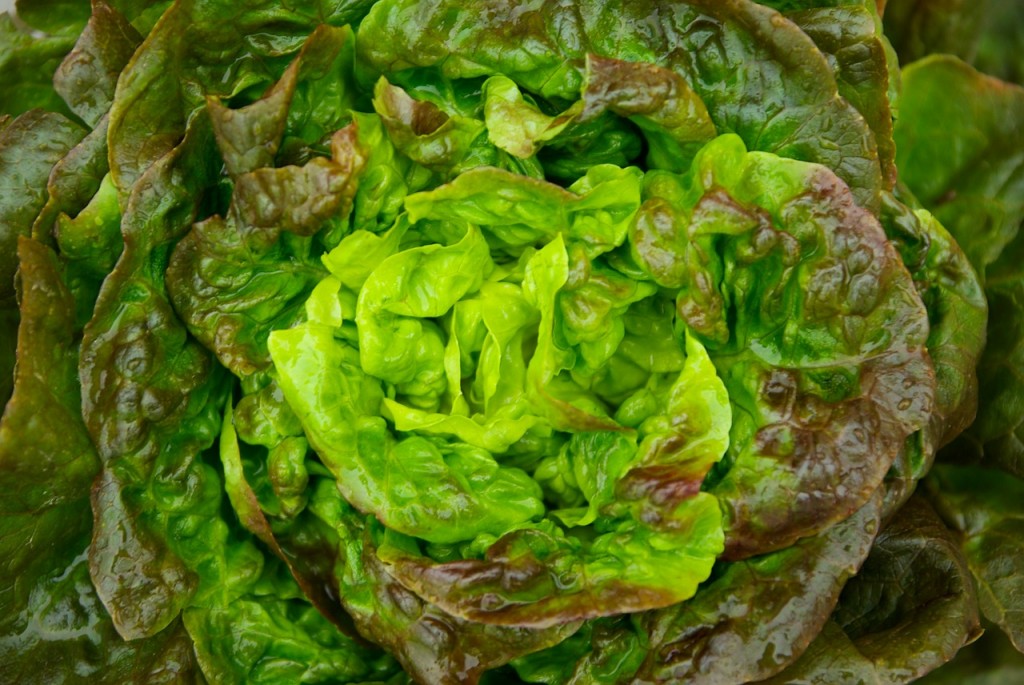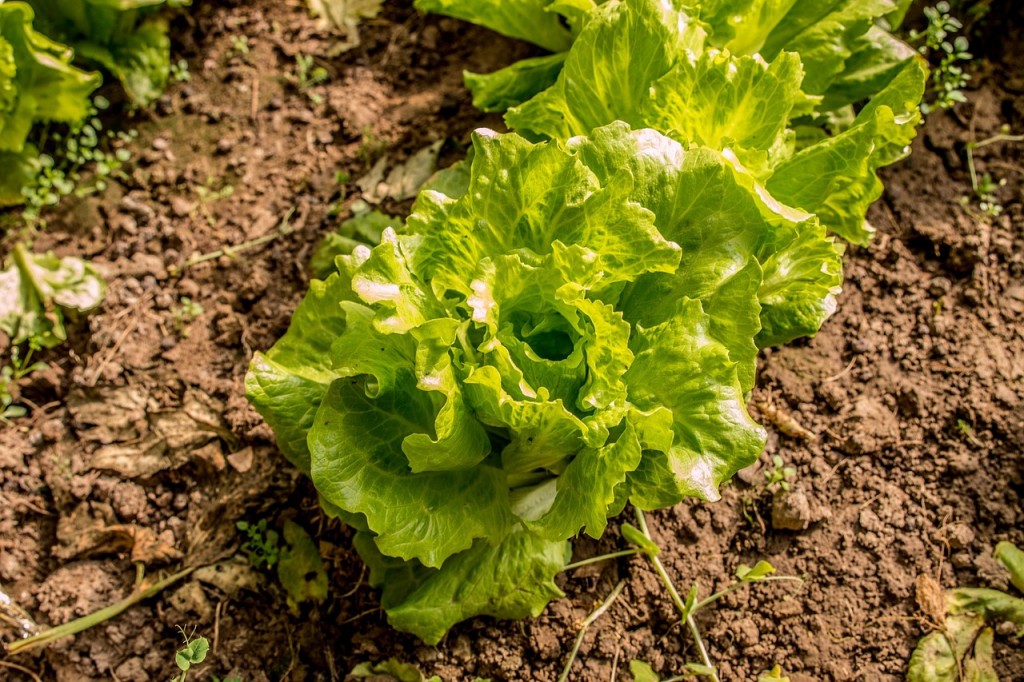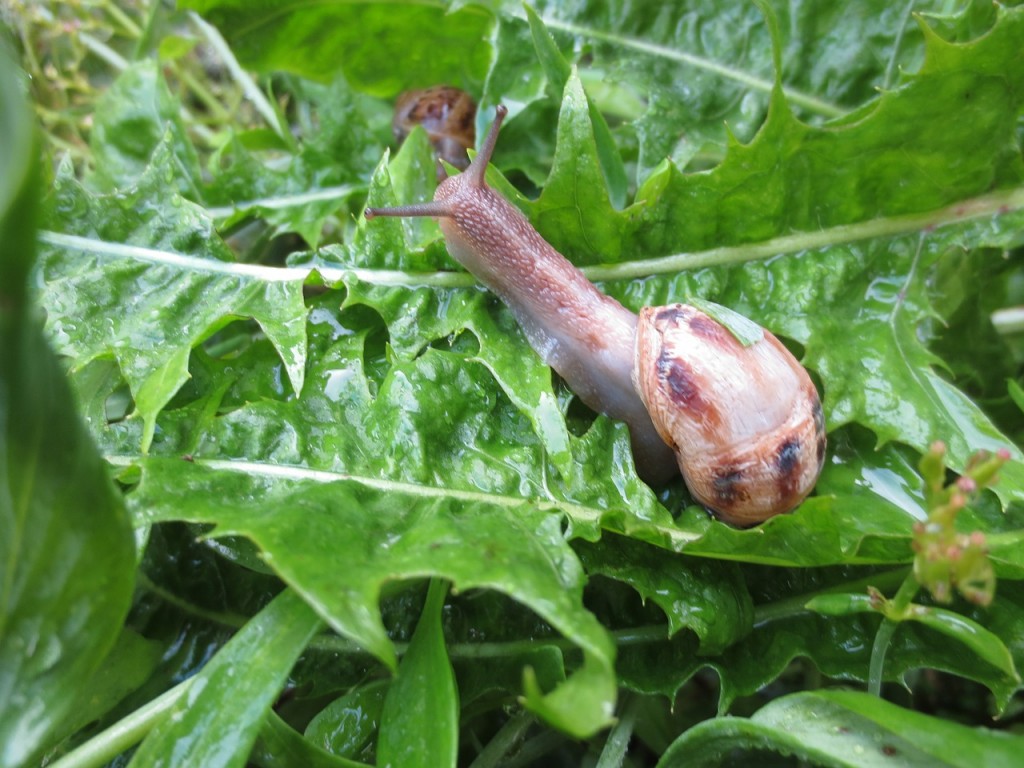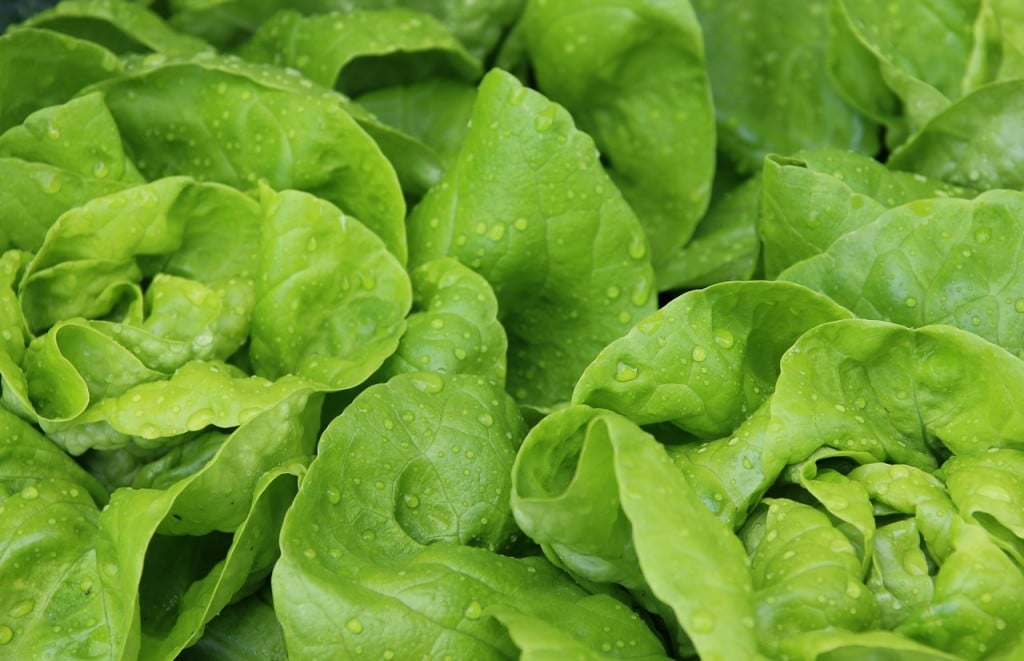
Growing your own lettuce is easy and quick and unlike lettuce from the supermarket it is really fresh.
You can grow a myriad of different sorts to provide really fancy salads that will wow family and friends.
Types of Lettuce
The seed catalogues are packed with many different forms of lettuce each with their own unique characteristics and flavour.
Butterhead lettuce are the soft lettuces with open heads. Crisphead types include Iceberg varieties and produce tight balls of crunchy leaves.
Looseleaf are similar to butterheads but have even more loosely packed leaves and are often crinkly.
These are ideal to grow if you just want to harvest a few leaves a time rather than lift the whole lettuce.
Cos lettuces are very popular as they form narrow, dense heads of crunchy leaves.
When to Sow

Lettuce can be sown from March through to August and winter/spring crops undercover from August to October.
Sow a small amount at f fortnightly intervals to keep up a constant supply.
Growing On
As the lettuce grow keep thinning out seedlings to always have gaps between the plants.
This will allow the ball-headed types to bulk out.
You will find that if the gaps are not big enough you may get a lot of narrow leaved lettuce with no hearts.
If spaces are large between ball-forming lettuce then the heads should make a good size.
Harvesting
Lettuce can be harvested at any stage. When you thin a row of seedlings keep the discarded ones for your lunch.
As the lettuce thicken up they can still be harvested or you can wait until they are fully mature and cut through the base of the stem.
The looseleaf types can be left in the ground and a few leaves removed at a time.
Pests and Disease
Fortunately lettuce does not suffer from many pests and diseases. In the early stages slugs and snails may be troublesome and aphids (greenfly) can also be a nuisance.
In rare cases cutworms can slice through the young stem and the plants will just topple over and wilt.
Downy mildew is a fungal disease that can cause problems particularly during periods of cool, damp weather.
Spores of the disease are carried on the wind or in rain splashes and cause pale yellow areas on the leaf which eventually brown.

In humid conditions such as those in a polytunnel you may get the whitish mould under the infected areas.
Keep polytunnels and cloches well ventilated and avoid growing lettuce too close together to improve air flow.
If this has been a problem disease grow in a different part of the plot and check catalogues for downy mildew resistant varieties.
Keep beds clean of debris, removing any waste stems and leaves. Sprays of Bayer, Dithane 945, available from most good garden centres, can help prevent the disease but check harvest intervals before spraying.
How to Sow
Lettuce can be sown direct in the ground or it can be started off in pots or cell trays.
Sowing into cell trays is ideal because each small cell can house one lettuce and when you come to transplant them into the ground there is less root disturbance.
Sowing in cell trays first means the tiny seedlings can be protected from poor weather and slug attacks.
If you want to sow lettuce early for planting out in March you could sow some in cell trays in the greenhouse in February or early March.
To sow in cell trays use a multipurpose compost or a John Innes seed or no 1 compost.

Fill the tray and water well before sowing one or two seeds per cell.
If sowing two seeds and two germinate you can remove one of them as soon as they are large enough to handle.
Place sown trays in a cold frame or on a greenhouse bench. Lettuce does not need high temperatures to germinate, in fact too high and it can inhibit germination.
Once the seedlings are 5-8cm (2- 3in) high they can be planted out on the plot. Simply dig a small hole and drop the lettuce in.
It doesn‘t matter if it is planted a little deeper than it was in the cell tray as this will prevent wind rock.
Water the hole before back filling the soil. Space your lettuce about 15cm (6in) apart if growing narrow cos or 30cm (12in) apart if growing large crispheads.
Sowing Direct
Lettuce can be sown direct on the plot and this is quite simple and usually very successful.
If you have problems growing lettuce this way then start them off in cell trays first.
Prepare the soil by digging, if not completed in the winter, and then raking the surface level and to a fine crumbly texture.
Mark out a row with a piece of string and using a stick or edge of a hoe make a long shallow groove in the soil. 1cm (1?2in) deep.
Remember to only sow half a row in one go so you don‘t end up with a glut of lettuce you can‘t eat.
Water the seed drill before sowing then sprinkle the seed along the row.
Try and aim for about 1cm (1?2in) gap between seeds but it isn‘t too crucial.
When the seedlings emerge after a week or two they will need to be thinned out to leave gaps between developing plants.
Did you know?
Lettuce can be sown as late as October under cloches and in polytunnels or greenhouses but choose the hardier varieties such as ‘All the Year Round’.











